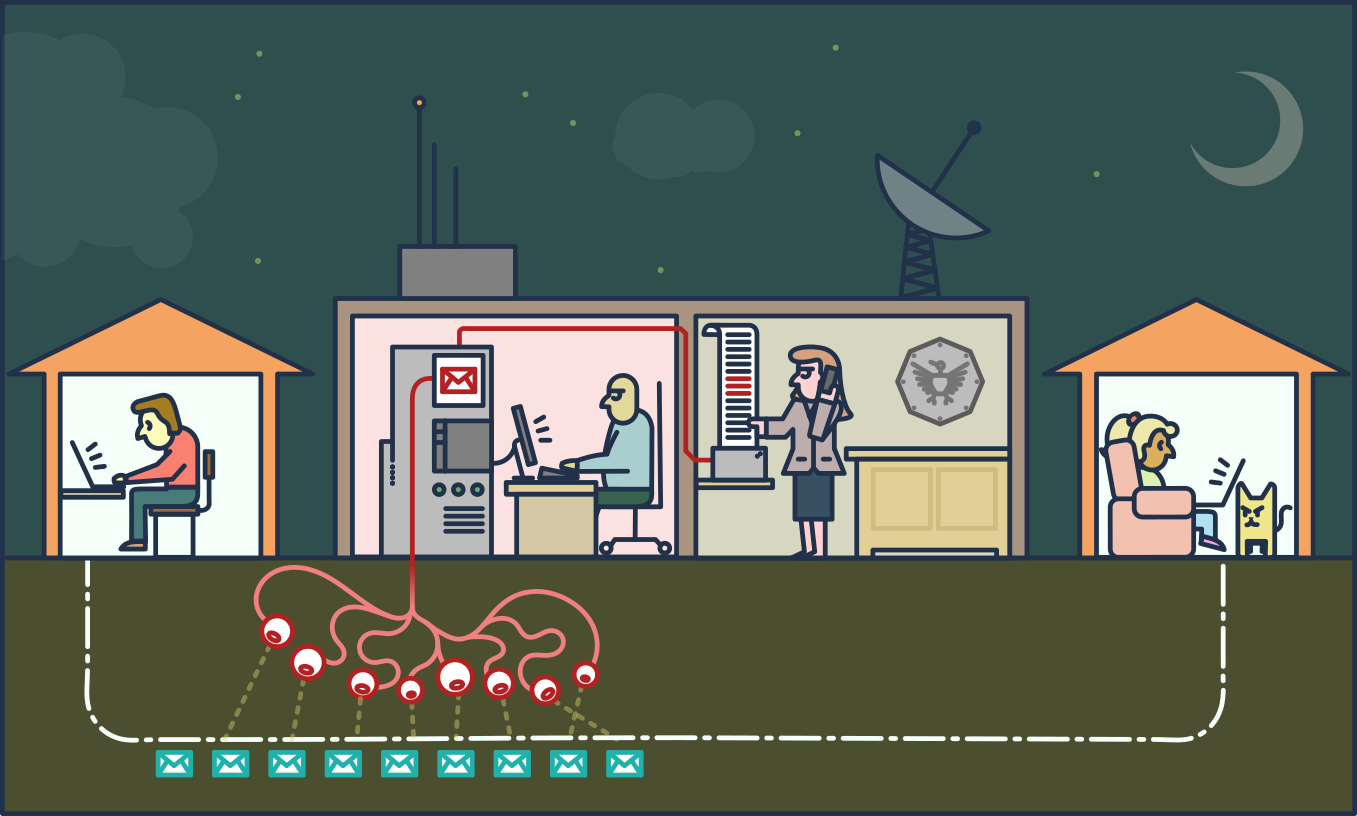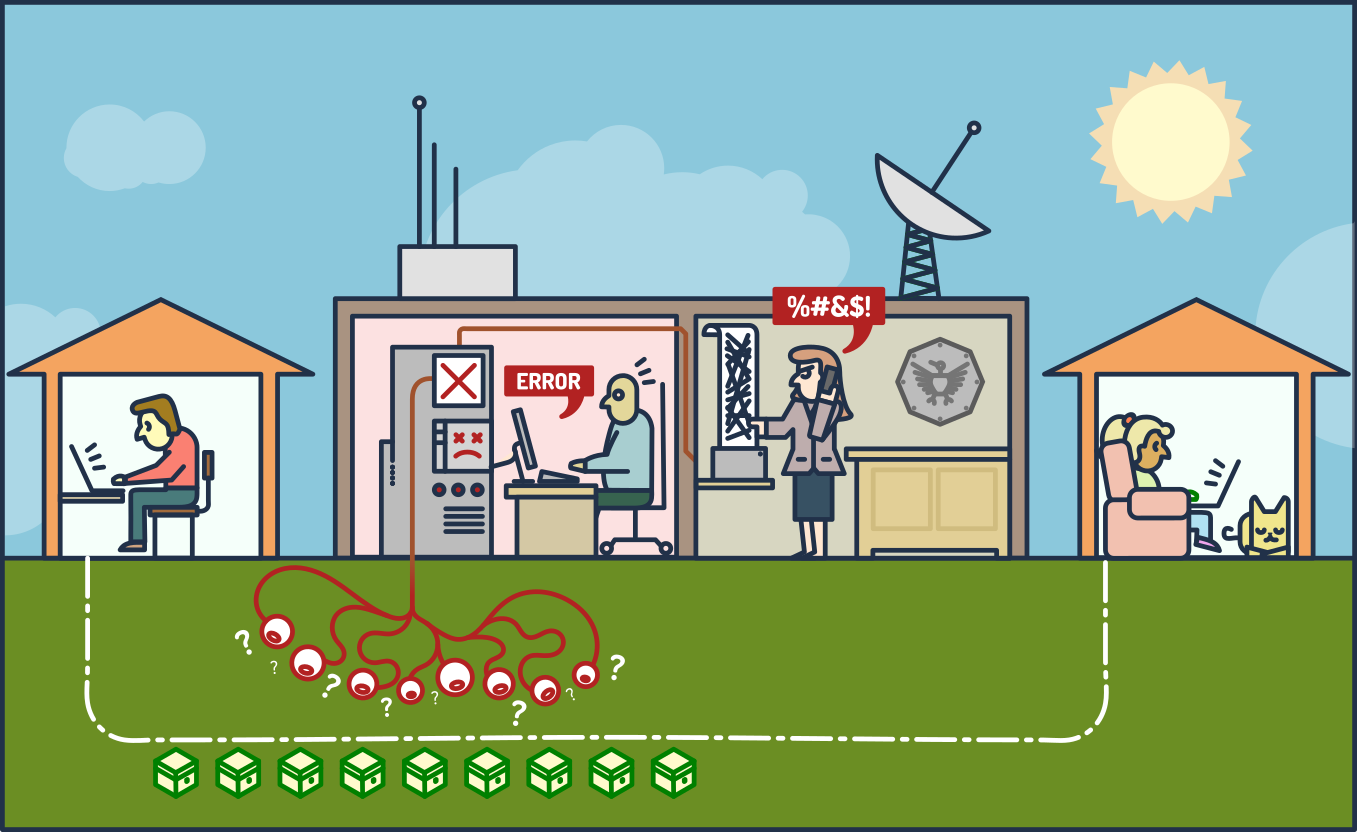Recently I wrote about encryption and in particular about free SSL certificates. SSL certificates are useful for serving web pages over the HTTPS protocol, secure and private email transfer from your email server to your email client program, secure and private usage of your own cloud service, and other. But there is more to security and privacy online.
If you are one of those who have been turning a blind eye to numerous security and privacy issues on the Internet with the rise of companies moving our online communications towards centralized silos (the Googles, the Facebooks, the Apples, and the Microsofts of the world), ever since 2013 Edward Snowden has been making it harder and harder to keep on doing that. In case you still don’t know what I’m talking about, it’s the global surveillance programs. Good morning, we live in a dystopian society. It’s Nineteen Eighty-Four.
This post is about protecting your email. However, one should note it doesn’t make much sense to protect your email in the way mentioned below if you use proprietary software on your computing devices (desktops, laptops, tablets, smartphones, or whatever). Proprietary software such as Microsoft Windows and Apple OS X and iOS is not controlled by you, but by respective companies, hence the software works against you. Android devices are not much better — almost all of them also have proprietary software installed and in terms of hardware a vast majority of the devices are defective by design (i.e. suitable for surveillance). Adding email protection on top of proprietary software is futile and pointless as the owners of the proprietary software — which is not you, you are a mere licensee that agreed to a nonnegotiable end user license agreement — can easily override the protection. Therefore, first I suggest you wipe away proprietary software and install free software; installing a free GNU/Linux distribution like Debian would be a great start.
Email messages are sent in plain text by default and they traverse multiple computers while being sent and received. An email provider might have an SSL certificate used for email transfer, but that protects the messages only on their way from the provider to their users and vice versa; the rest still goes and is in plain text. For example, having an HTTPS connection to your Gmail inbox doesn’t do you much good when in the end it’s Google, the NSA, and their buddies at the GCHQ reading your messages in plain text as if they were postcards. Even though I don’t use Gmail, Google has most of my email because it has all of yours. This is obviously unacceptable. Everyone has a right to communicate freely and securely in private; if that is endangered, the whole society suffers and falls under a totalitarian regime.
The solution is to use an open standard that scrambles email messages for those that have no business in reading your mail, and at the same time makes them clear for intended recipients. The standard is called OpenPGP, which is short for Pretty Good Privacy. It is interchangeably used with terms such as PGP, GNU Privacy Guard, GnuPG, and GPG. For this to work, both communicating parties have to use the standard. It all boils down to having a cryptographic keypair, a pair of codes where one code is public and the other is secret and known only to you. However, you don’t have to have a degree in cryptography to use it.
I’ve been using GPG for several years now. Just recently my first keypair expired and I created a new one (I set this one to never expire). For example, I run the server hosting this web site and when I need to communicate something administrative about the server to my brother, him and me use GPG to encrypt our email communication. That way no one can tell the content of our communication but the two of us. You don’t need to be a server admin or Edward Snowden to need to communicate privately and securely. Note that “I’ve got nothing to hide” is a very dangerous political statement as it legitimizes unauthorized power over us. Snowden also said,
Arguing that you don’t care about the right to privacy because you have nothing to hide is no different than saying you don’t care about free speech because you have nothing to say.
It is a basic human right not being watched over by someone, so read on to learn how to take control over your email communication.
As mentioned before, for secure and private email communication you need free software and free software only. Free software puts you in charge, not someone else remotely controlling your computing devices. The well known implementation of OpenPGP is the GNU Privacy Guard (abbreviated as GnuPG or GPG), a tool by the GNU Project. It may be daunting to set it up and start using it on your own. Therefore, the Free Software Foundation (FSF), which is the organization behind the GNU Project, has prepared Email Self-Defense, a guide to fighting surveillance with GnuPG encryption. The guide comes with an infographic (pieces of it are heavily used in this post) giving you a quick introduction to the problem and how to go about it. What is nice about the guide is that you don’t need a friend that already uses OpenPGP in order to set it up on your computer or device; in testing your setup you can communicate via email with Edward, a computer program by the FSF that knows how to use encryption.
I don’t use the email client that is recommended in the guide. Instead, I use Evolution, a personal information manager for GNOME (that’s a nice benefit of relying on open standards and free software — you can choose any implementation you like of a given open standard). If you also use other than the IceDove email client, note that in step 3.A of the guide I downloaded my public key from a key server and attached it to an email to Edward the computer program. Finally, I also signed Edward’s public key with my private key, thereby participating in the web of trust.
What I also did is to change the signature I put at the end of each email. For example, when sending school and research related mail, I have this signature:
Kind regards,
Marko Dimjašević <marko@cs.utah.edu> . University of Utah
https://dimjasevic.net/marko . PGP key ID: 1503F0AA
Learn email self-defense! https://emailselfdefense.fsf.orgThat way I inform others about the guide and my public PGP key. Furthermore, all my email messages are automatically digitally signed. I also encrypt messages with those whose public keys I have.
I would encourage you to set up GnuPG. If you do so, get my public key and let’s get in touch!



